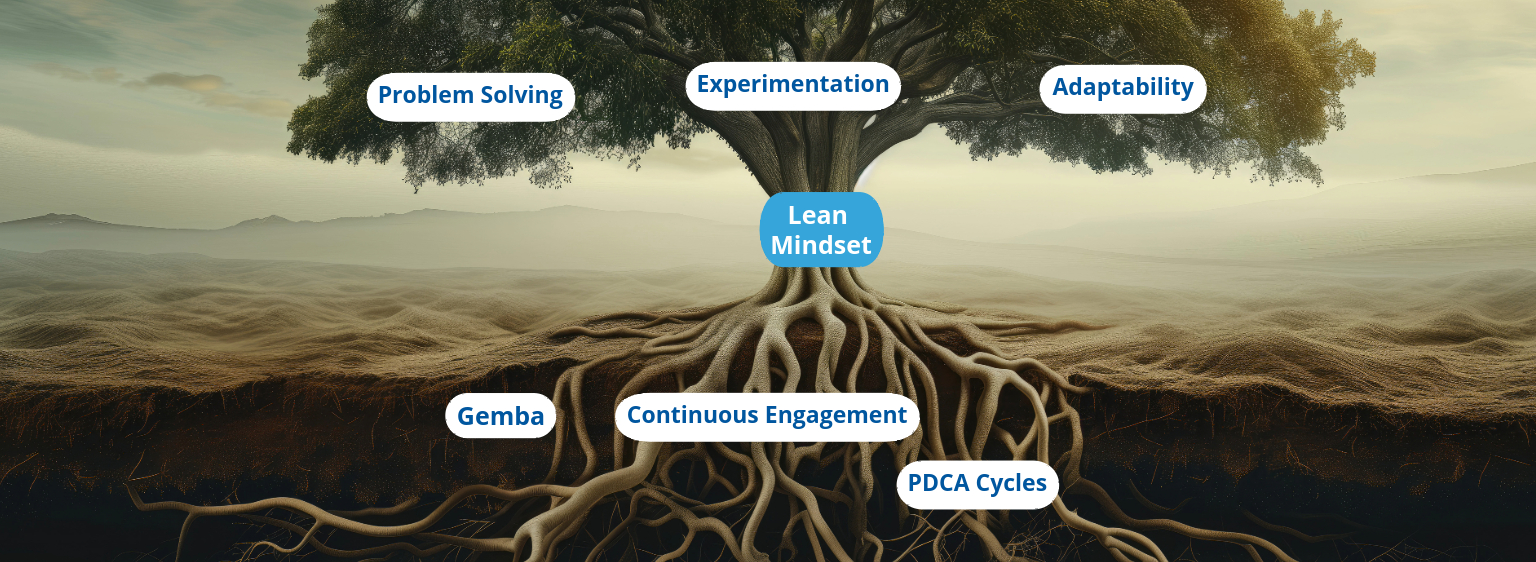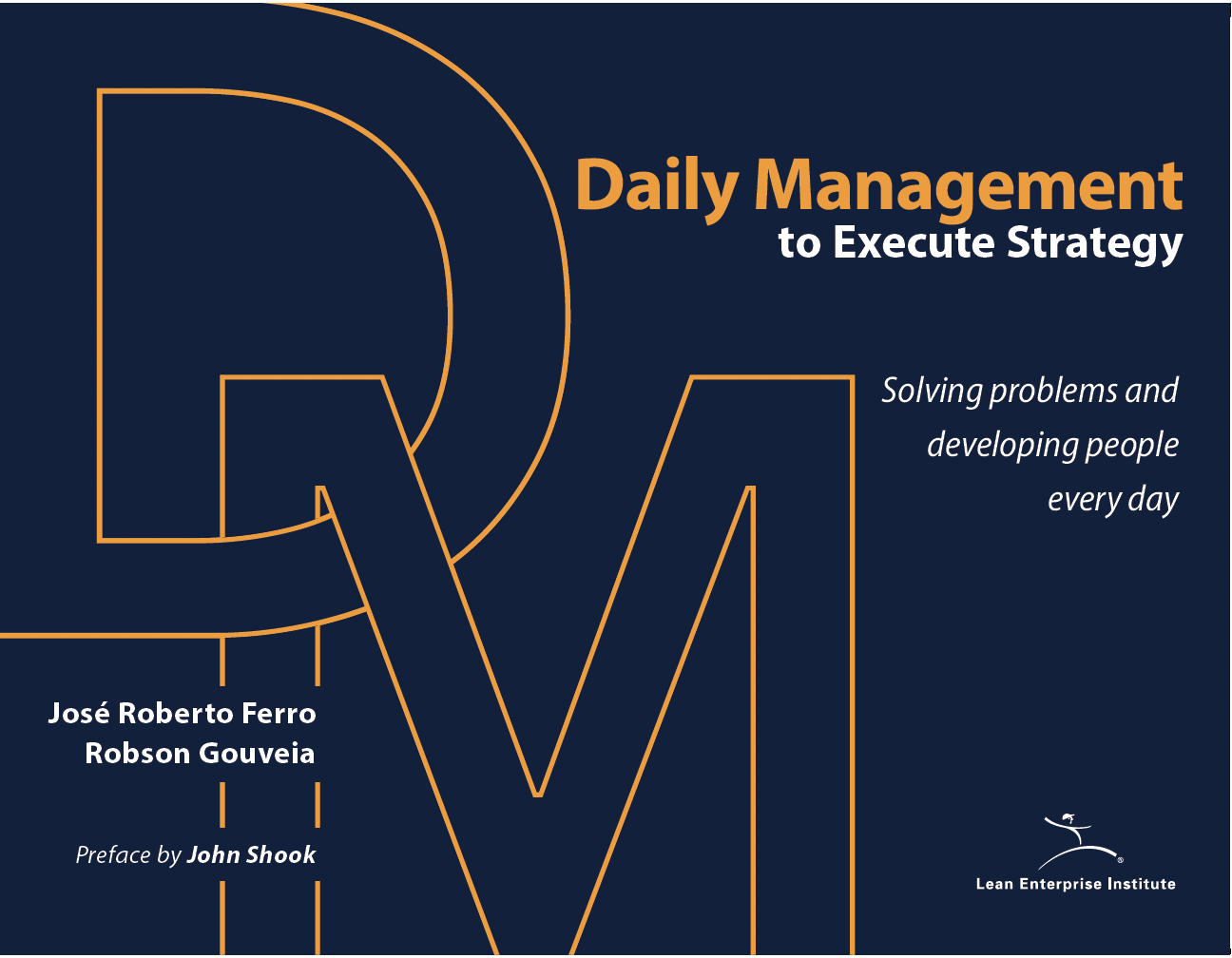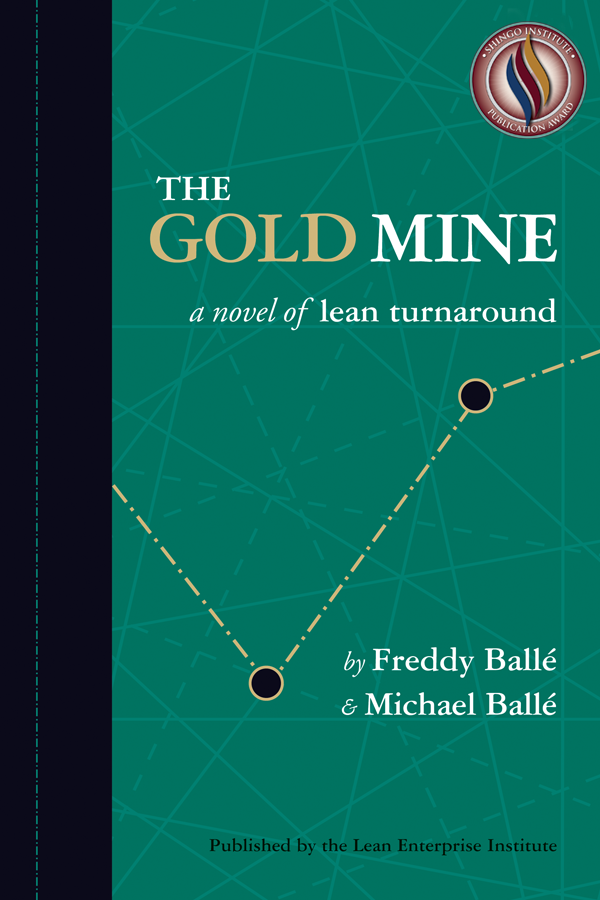Several years ago I started to talk about the need to move beyond lean tools – including the very powerful concept of Value-Stream Mapping – to lean management. At the same time we at LEI began to publish a set of volumes on lean management techniques. These consist of strategy deployment to set priorities from the top of the organization, A3 analysis to deploy new initiatives and solve problems in the middle of the organization, and standardized work with kaizen to create stability and sustainability at the bottom of the organization where value is actually created.
Recently I’ve been walking through a range of organizations to see how these lean management techniques are being used. Let me cite several illustrative cases:
In one organization I found a remarkably elaborate strategy deployment matrix posted throughout the headquarters and in the plants. It was the familiar x-shaped diagram with important business objectives on the left side, the initiatives needed to achieve the objectives along the top, and the specific results to be achieved in the current year on the right side. In addition there was an array to the right side showing who in which part of the organization was taking responsibility for each initiative and which parts of the organization were affected by each initiative.
And I also found very little success in achieving the goals. Instead, the organizational focus at the end of the budget year was on explaining why progress had not been what had been anticipated. It was a new form of the variance analysis I caricatured in last month’s e-letter!
Tools — for process analysis and for management — are wonderful things. And they are absolutely necessary. But they can’t achieve their potential results without managers with a lean state of mind to wield them.
In a second organization I found that the COO had decreed that all problems were henceforth to be tackled using A3 analysis employing a standard eight box format. At the review meeting I attended, every manager showed up with a completely filled out A3 to prove they were on top of their jobs. And, because this organization was transitioning from a decades-long tradition of preparing lengthy reports on every problem (with pages of documentation), the A3s used one point type to crowd in all of the details that would have been included in a traditional report. When these were projected as PowerPoints it turned out that no one in the room could actually read them. But every manager had done his job.
In a third organization I found all of the elements of standardized work – work standards, work combination tables, kaizen opportunity lists – clearly posted in work areas and … no standardized work. A few minutes observation showed that the work was not actually being done in the way the work standards required and that kaizen activities were not based on clear problem definition. Yet the management took pains to show me how much progress they had made with this splendid technique as part of their new visual management system.
As I walked through these and other organizations I was sobered to realize that these new lean management techniques had become more tools, in this case lean management tools. They were being followed as corporate ritual without thinking about their actual purpose. As so often happens in organizational life, means had become ends.
I was not surprised. Tools — for process analysis and for management — are wonderful things. And they are absolutely necessary. And managers love them because they seem to provide short cuts to doing a better job. But they can’t achieve their potential results, and often can’t achieve any results, without managers with a lean state of mind to wield them.
What do I mean by a lean state of mind?
First, the lean manager eagerly embraces the role of problem solver. This means going to see the actual situation, asking about the performance issue, seeking the root cause, and showing respect for lower-level managers and for colleagues at the same organizational level by asking hard questions until good answers emerge. It’s this critical, probing state of mind that permits lean tools to be put to good use as the lean manager applies the right tool for the specific problem and does this in context on the gemba rather than in the abstract in some conference room. Empty ritual is replaced with a rigorous thought process that engages employees and pulls forward their best abilities.
Second, the lean manager realizes that no manager at a higher level can or should solve a problem at a lower level. (And one of the worst abuses of lean tools lies in trying to do just this.) Instead, the higher-level manager can assign responsibility to a manager at a lower level to tackle the problem through a continuing dialogue, both with the higher-level manager and with everyone actually touching the process causing the problem. The lean law of organizational life is that problems can only be solved where they live, in conversation with the people whose current actions are contributing to the problem. But this requires support, encouragement, and, yes, relentless pressure, from the higher-level lean manager.
Third, the lean manager believes that all problem solving is about experimentation by means of Plan Do Check Act. No one can know the answer before experiments are conducted and the many experiments that fail will yield valuable learning that can be applied to the next round of experiments.
Inside the mind of the lean manager lies a restless desire to continually rethink the organization’s problems, probe their root causes, and lead experiments to find the best currently known countermeasures.
Finally, the lean manager knows that no problem is ever solved forever. Indeed, the introduction of a promising countermeasure is sure to create new problems at some other point in the organization. This is not bad. It is good, provided the critical, probing mind of the lean manager keeps on the case in pursuit of perfection.
In short the traditional manager is usually passive, going through rituals and applying standard remedies to unique problems. By contrast, inside the mind of the lean manager lies a restless desire to continually rethink the organization’s problems, probe their root causes, and lead experiments to find the best currently known countermeasures. When this lean mindset is coupled with the proper lean tools amazing things are continually possible.
Best regards,
Jim
James P. Womack
Founder and Chairman
Lean Enterprise Institute, Inc.
Lean Management Systems
Improve Performance and Create Innovation.




